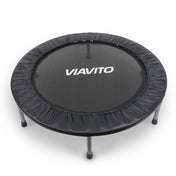Running is maybe the oldest form of exercise there is, a simple pastime that everyone can take part in with little to no training or equipment. But, it’s also an activity that can put a great amount of impact and strain on the body. There are various products available to help limit this, whether you are trying to prevent an injury or to continue to train while rehabbing a pre-existing one.
Here, you’ll find all the information you need to continue your fitness journey, without letting pesky injuries get in your way and push you off track, literally and figuratively.
Do I need running support equipment?
Generally, the only people who actually need running support equipment are those dealing with an injury, whether it be joint, muscle or tendon related. The support should provide sufficient pressure to not only stabilise the injured area during activity but also to help it heal in the long run.
That said, there is no reason others can’t use them as well. Anyone with any minor aches and pains could potentially prevent the risk of developing an injury over time.
Types of running support equipment:
Back support/ Lumbar support
Back supports and lumbar supports are designed to be worn around the torso and are designed to reduce the impact on the spine while running. They are ideal for anyone who has any kind of back injury.
Knee support
Knee supports are worn to apply pressure to the kneecap to secure the joint in place. This is one of the most common supports used, as the knees are under the most strain while running. This makes it suitable for all users, but especially anyone with a history of knee problems.
Ankle support
Ankle supports are worn around the lower part of the leg to support the ankle joint. They are designed for anyone who has chronic joint issues or who is rehabbing an injury to that part of the body.
Achilles support
Achilles supports can look similar to ankle supports, as they are worn around a similar area. They are designed to support problems with the Achilles tendon, in order to stop it from snapping.
Calf support
A calf support is worn on the lower part of the leg and designed to support the muscle, as opposed to joints or tendons. They are best used by anyone suffering from any pulls or strains to the area.
Thigh support
Thigh supports are much like calf supports, only this time they are used on the upper portion of the leg. Again, they are designed for anyone who is dealing with any pulls or strains to the muscles in the area.
Arch support
These are designed to go in a person’s shoe to support the arch of their foot. They are designed for people who need to correct their posture, have weaknesses in their legs, have an issue with their gait, or suffer from conditions such as plantar fasciitis.
Other things to consider
Durability
As running supports need to remain tight to be effective but are consistently put under a lot of strain, you need to make sure it is durable, otherwise you will constantly need to be replacing it. Make sure to check the quality of your product before buying, to make sure you get one that you are confident is going to last.
Size
In order for a running support to be effective, it needs to be exactly the right size for the user. Make sure you pay close attention to the size of your support when purchasing, as the wrong one will do you little to no good.
Level of compression
A running support won’t be effective if it doesn’t provide sufficient compression. Be absolutely certain the one you choose has a high enough level, otherwise there is almost no point wearing it.
Comfort
You will need to make sure the support is not too tight or too small. Comfort is paramount to your continued use of the product, so ensuring it is effective yet enjoyable to wear is a fine balance that you have to get right.
You will also want to choose one made from a material that you find comfortable, that you know won’t cause any allergic reactions.
Warranty
With the amount of effort that will go into selecting the perfect running support to keep you both protected and comfortable, you are going to want to make sure it lasts. Be certain the product you select features a warranty that gives you confidence it will stand the test of time.
Your budget
A support is one area where you want to try and put the budget out of your mind. If you are already dealing with an issue, you want to give yourself the best protection possible to stop it from turning into a serious injury, no matter the cost.

